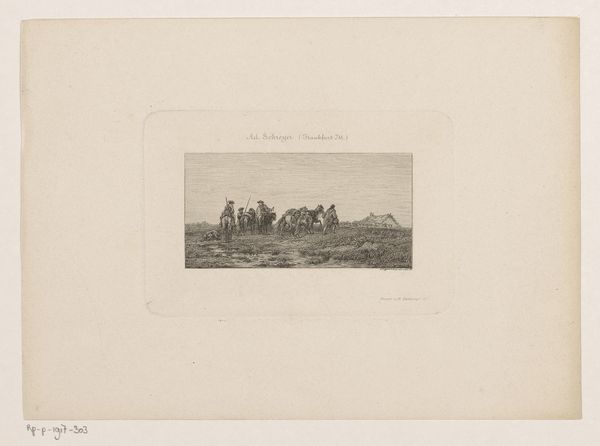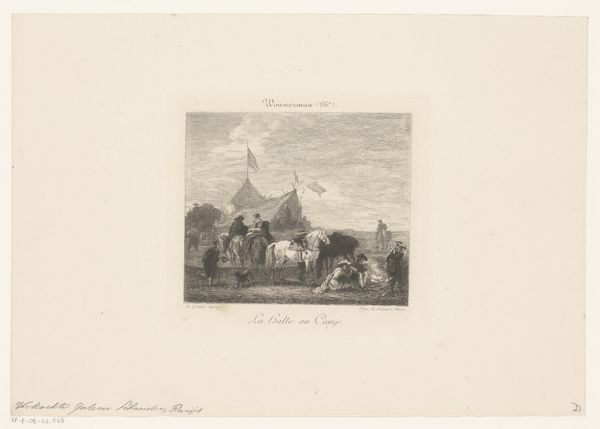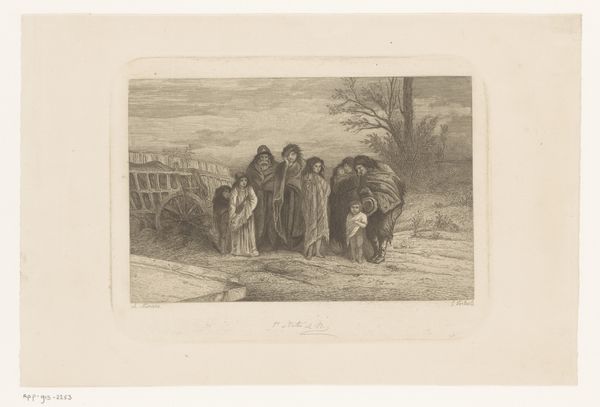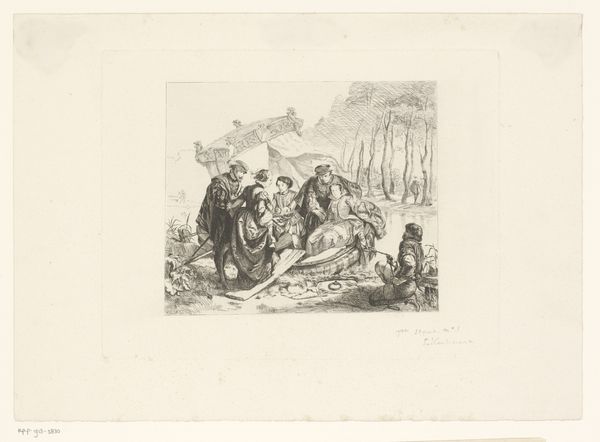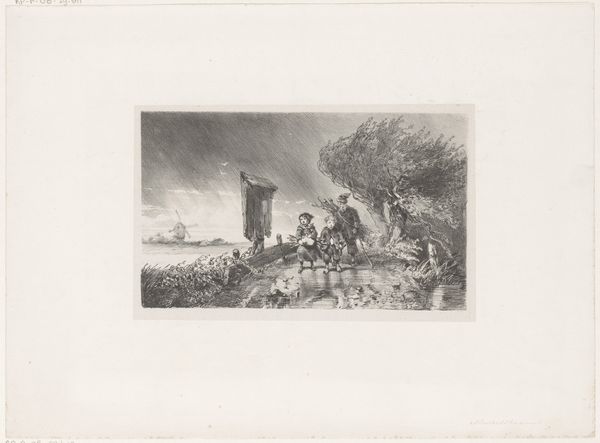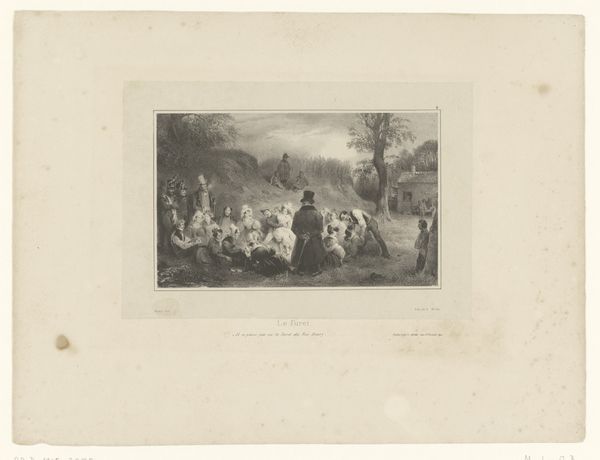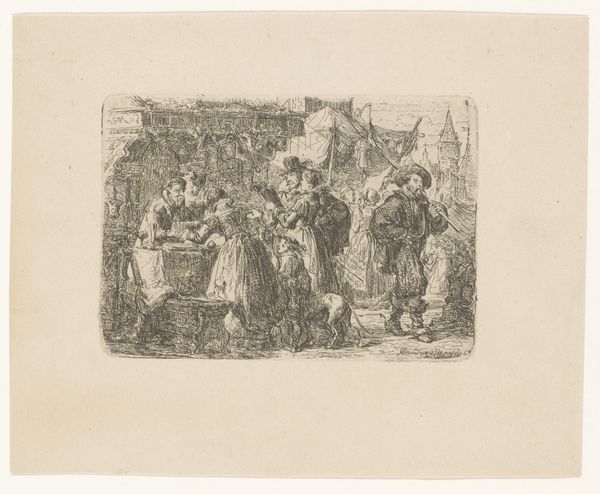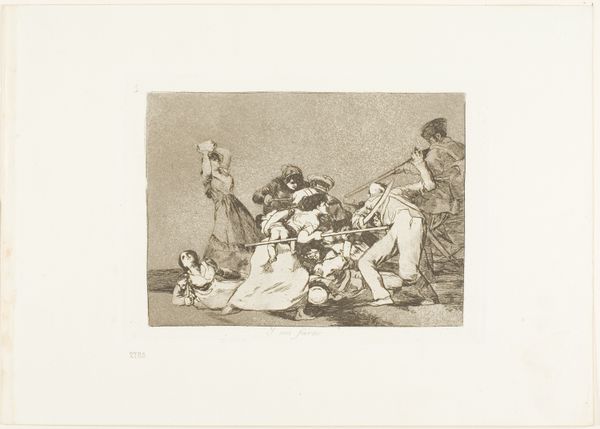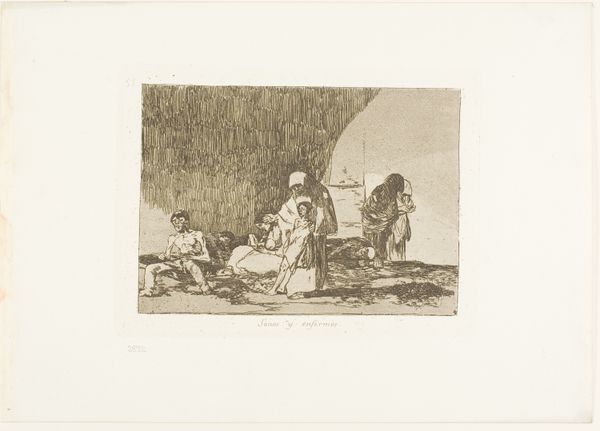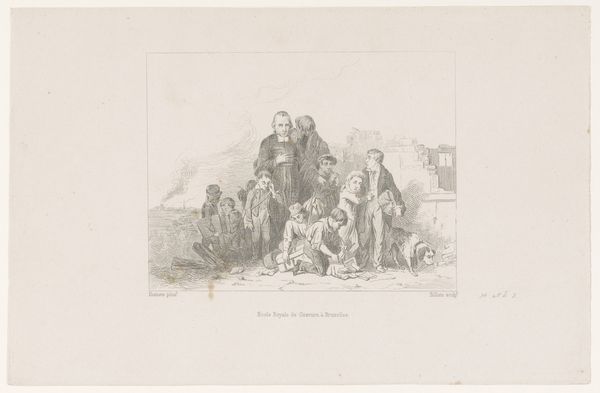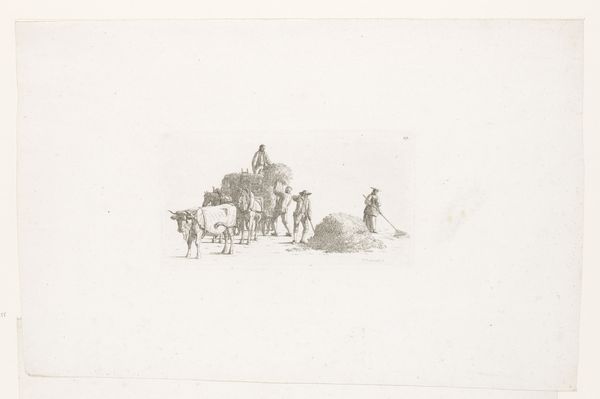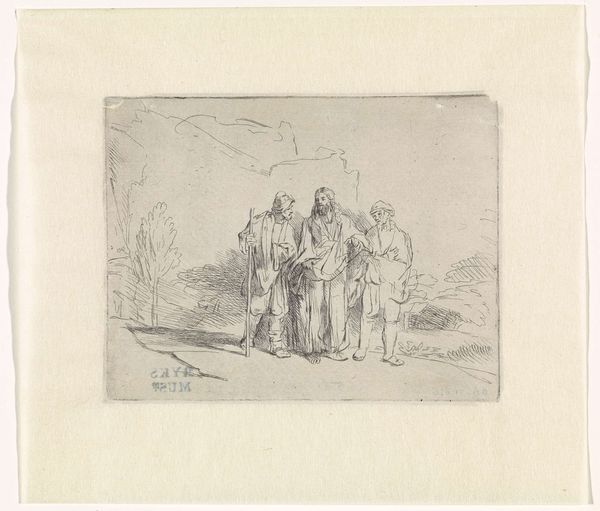
Dimensions: height 272 mm, width 362 mm
Copyright: Rijks Museum: Open Domain
Curator: Before us is "Ruiters in duinlandschap," or "Riders in a Dune Landscape," a work by Charles Rochussen, created before 1851. It’s currently held here at the Rijksmuseum. Editor: The immediate impression is quite melancholic. A muted palette, almost ghostly, gives it a wistful atmosphere. The figures seem to emerge from, or perhaps recede into, the very fabric of the landscape. Curator: That subdued atmosphere really resonates with the Romantic movement, wouldn’t you say? Consider the social backdrop of the mid-19th century. Industrialization was transforming Dutch society, and artists often sought solace in the nostalgic depiction of rural life. This piece reads as a subtle commentary on a world in flux, with equestrian figures becoming potent symbols of class. Editor: Undoubtedly. And it's wonderfully composed. The diagonal sweep of the dune guides our eye deeper into the scene. Rochussen's skill in rendering texture with simple lines is striking – the roughness of the dunes, the shimmer of the water. The eye is taken through a meticulously controlled sequence. Curator: Yes, Rochussen’s placement of riders emphasizes a hierarchical structure. Those on horseback hold a visual power over those on foot, reflecting the prevailing societal structure. Even the slight disruption with the man apart to the left signifies a break from the traditional order. A fascinating glimpse into historical narratives of class and social positioning, don’t you agree? Editor: I agree. Look, also, at how Rochussen employs light and shadow. The contrast isn’t dramatic, but subtle variations bring the landscape to life. The way the light touches the backs of the horses creates just enough separation and adds subtle depth to the entire composition. Curator: And what could the figures represent within the evolving roles of men and women? The traditional gender roles within genre paintings, often perpetuating the image of women's domesticity against the more active masculine image – are these figures complicit? Or perhaps defiant? The setting also mirrors societal constraints in a time of rapidly changing expectations of individual potential. Editor: Food for thought, certainly. But back to form. What I appreciate is how he uses the print medium, likely an engraving, to achieve an atmospheric perspective, diminishing detail and contrast as the landscape recedes. The balance in the work really is excellent, directing the gaze. Curator: Looking closer, this print serves not only as a depiction of landscape but also as an interesting artifact to interrogate 19th-century ideas surrounding power, class, and evolving social dynamics. Editor: Ultimately, "Riders in a Dune Landscape" is more than just a picturesque scene; it's an intricate, elegant exploration of light, form, and texture.
Comments
No comments
Be the first to comment and join the conversation on the ultimate creative platform.

